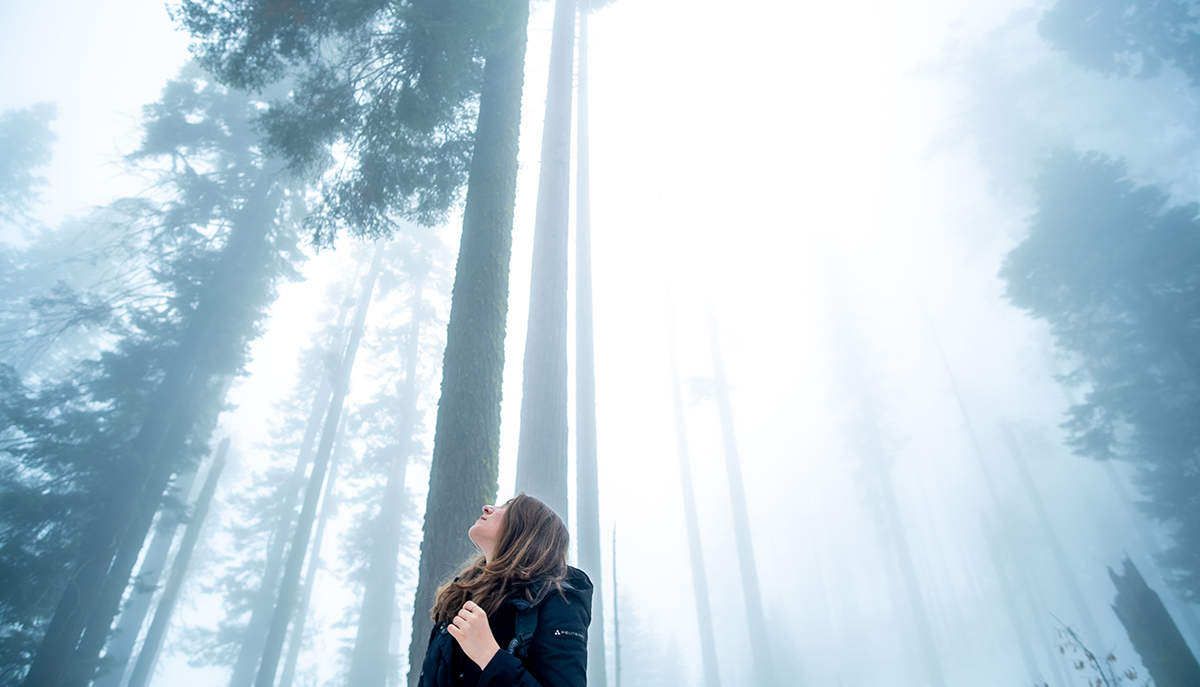The zazen I speak of is not learning meditation. It is simply the dharma gate of ease and joy… the manifestation of ultimate reality.
—Master Dogen
A few years ago I came across an unusual description of shikantaza, the objectless meditation at the heart of Soto Zen Buddhism that is sometimes called “just sitting.”
“Shikantaza,” said Hakuun Yasutani Roshi, “is like sitting in the center of a clearing in the forest, knowing that ultimate danger is about to strike but not knowing what form it will take or from what direction it will come.”
I’ve come to see shikantaza as a practice of infinite trust.
I’d found this quote in an essay by Flora Courtois, a long-time Zen practitioner who’d studied with Yasutani Roshi at the Zen Center of Los Angeles. Her account of her spiritual unfolding was so striking that I was riveted from the moment I began reading it. When I arrived at her analysis of Yasutani’s description of shikantaza, I found a teaching I didn’t even know I’d been missing. I changed my understanding of how to practice zazen.
At the time, I had just returned to the practice of shikantaza after many years of koan study, and at first I struggled with it. I was so used to focusing my mind—to concentrating hard and doing something—that to just sit was disorienting. I knew better, but every now and then the question that so many shikantaza practitioners ask would pop up in my mind too: how will I know if I’m doing it right? It took time to really trust that the point—if there was any—was not to know, not to do, and simply sit in the open, undifferentiated awareness of things as they are.
Since then, I’ve come to see shikantaza as a practice of infinite trust—trust that we can be with ourselves without attempting to change, fix, do, or even attain anything. Trust that when we just sit, we are embodying awakening itself.
The word shikantaza—“just sitting” or “nothing but sitting”—is attributed to Eihei Dogen, the founder of the Japanese Soto school of Zen, who said he got the term from his teacher, Tiantong Rujing. Yet long before Dogen popularized this “methodless method” of zazen (as some contemporary teachers have called it), traces of it could be found in the writings of the eighth-century Chinese master Shitou Xiqiang and his successor, Yaoshan Weiyan. The latter, answering a monk who asked him what he thought about when he sat so still and quiet, said, “I think not-thinking.”
“How do you think not-thinking?” the monk asked.
“By nonthinking,” Yaoshan answered.
Four centuries later, Dahui Zonggao, an ardent proponent of koan study, coined the term “silent illumination” to disparage a practice that he felt bred only passivity and delusion. But his contemporary, Hongzhi Zhengjue, liked the phrase and, in a classic example of linguistic reappropriation, claimed it as his own. Rujing taught at the monastery where Hongzhi was abbot for many years, and so was familiar with the practice that he eventually began referring to it as “just sitting.” From there it was only a short step for Dogen to adopt the term and enthusiastically speak of shikantaza as the universal form of zazen—the dharma gate of ease and joy.
But how do we enter this dharma gate without striving or concentrating, without meticulously and repeatedly letting go of the thoughts that obscure our clarity? In other words, how do we practice without doing? Conversely, how do we ensure that our silent sitting does not slide into the complacency or blank passivity that Dahui was so wary of?
This is where Flora Courtois offers us a way in. She writes that the practice of enlightenment requires us to enter a state in which the “tension between peak alertness and profound stillness is stretched to its limit.”
Imagine yourself for a moment as that metaphorical sitter in the forest, situated in the middle of a clearing around which danger lurks just out of sight. Like an animal facing a threat, your attention must be utterly focused. Yet it must also be completely receptive and relaxed. To respond appropriately, you must enter the liminal space between absolute stillness and all-encompassing awareness.
It is here, Courtois says, in the place where all thought and movement are stilled, that awakening takes place. It is here that we find the source of the subtle radiance that, as so many Buddhist teachers have said throughout the centuries, is our natural state of mind. The key to finding—or rather uncovering—this radiance lies in the word just of “just sitting.”
In Zen we say “just sit,” “just walk,” “just eat,” but what does that “just” point to? Another way of asking this question is to wonder, what is the nature of undivided attention and how does it relate to stillness and relaxation? For it is only when attention, stillness, and ease are present that we can say with confidence that we’re not spending our zazen time “just thinking” or zoning out. Therefore, we can also think about shikantaza in terms of right effort.
The Buddha, teaching a young monk about right or appropriate effort, said to him, “Sona, when stringing your lute, what happens if the strings are too tight?”
Sona answered, “They’ll break.”
“And if they’re too loose?”
“They won’t play.”
“Just so,” the Buddha said, “too much zeal leads to restlessness, too little persistence leads to laziness. Thus you should determine the right pitch for your persistence.”
Not too much or too little. Not too tight or too loose. When our attention is neither narrow nor diffuse, neither one-pointed nor distracted, then we are able to be completely present with each thought, feeling, and sensation, watching it arise and pass away in our minds. In effect, we neither do nor not do. This is shikantaza.
Practice: Just Sitting
It’s ironic that although the teachings on shikantaza and silent illumination have spawned countless commentaries, there are precious few that state directly how the practice should be done.
This is not accidental. Every single person who engages in “just sitting” must discover for themselves what it means to rest in bright, open awareness. This cannot be taught, and it certainly can’t be given. The best we can do is point, as Dogen did, to the conditions necessary for this radiance to shine through.
First, find a quiet place to sit that is warm in winter and cool in summer. Wear comfortable clothing and settle your body in the posture of the seated Buddha, with your legs folded under you and your spine upright.
Rest your hands in your lap with your thumbs pressed together lightly, lower your eyes, close your mouth, and breathe naturally.
Then? Sit solidly and think not-thinking. How? By nonthinking.
Most importantly, trust yourself and your mind’s natural capacity to illuminate what you think is hidden. Trust that what you’re seeking, you already are.

